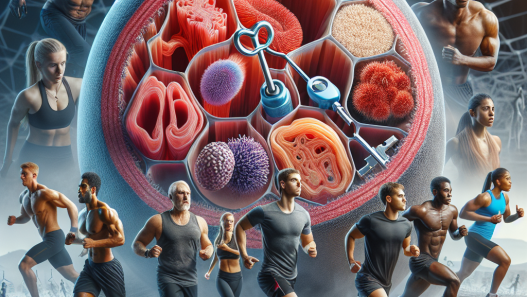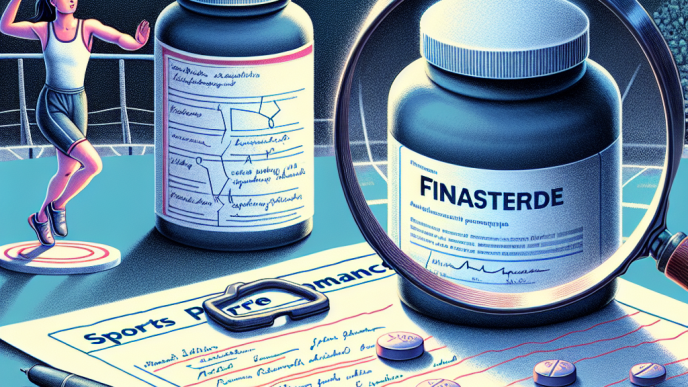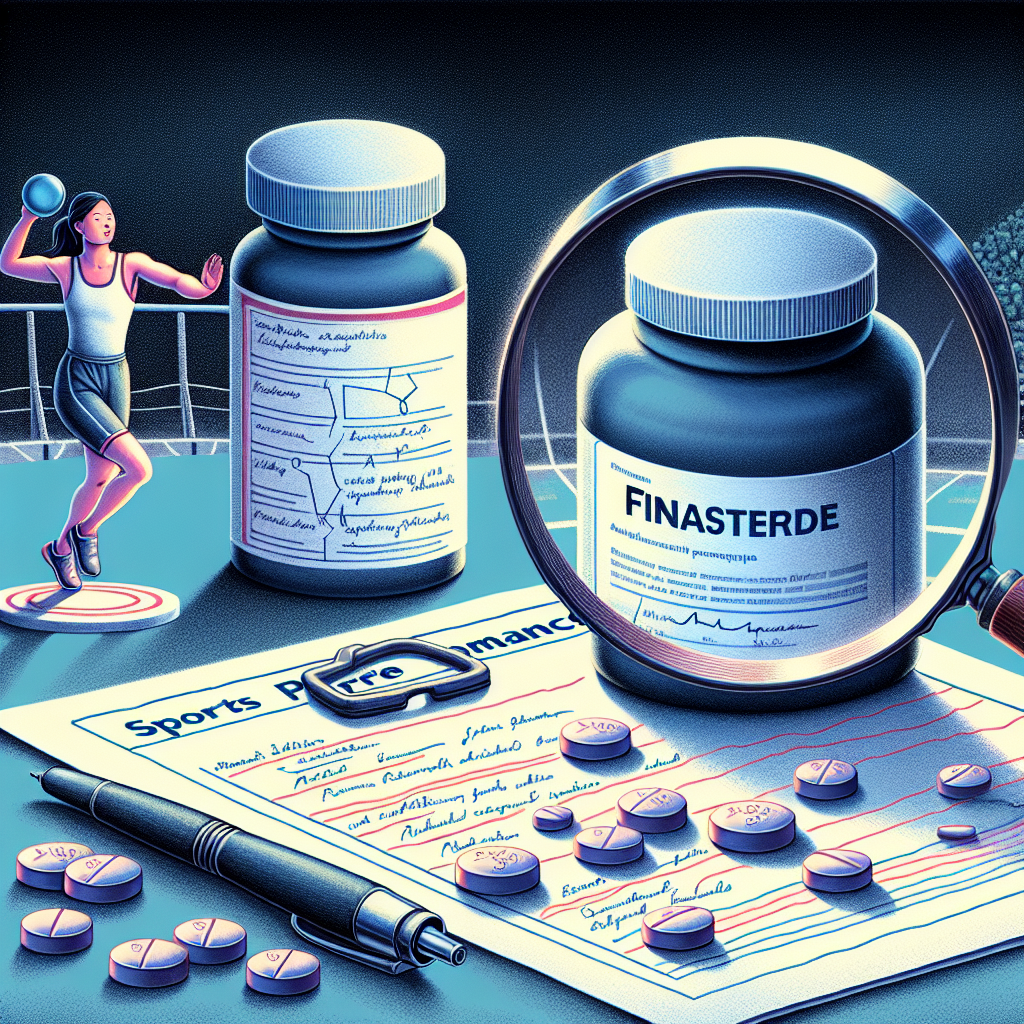-
Table of Contents
Finasteride and Sports Performance: Study on Potential Drug Interactions
Finasteride, also known by its brand name Propecia, is a medication commonly used to treat male pattern baldness. However, recent studies have shown that this drug may also have potential effects on sports performance. As a researcher in the field of sports pharmacology, it is important to understand the potential interactions between finasteride and other drugs commonly used by athletes. In this article, we will explore the pharmacokinetics and pharmacodynamics of finasteride and its potential impact on sports performance.
Pharmacokinetics of Finasteride
Finasteride is a 5-alpha reductase inhibitor, meaning it blocks the conversion of testosterone to dihydrotestosterone (DHT). This mechanism of action is what makes it effective in treating male pattern baldness, as DHT is responsible for hair loss in men. Finasteride is primarily metabolized by the liver and has a half-life of approximately 6 hours (Traish et al. 2014). It is also known to have a high bioavailability, meaning that a large percentage of the drug is absorbed and reaches systemic circulation.
One important factor to consider when studying the pharmacokinetics of finasteride is its potential interactions with other drugs. Finasteride is primarily metabolized by the CYP3A4 enzyme, which is also responsible for metabolizing many other drugs commonly used by athletes, such as anabolic steroids and beta-blockers (Traish et al. 2014). This means that there is a potential for drug interactions that could impact the effectiveness of finasteride or other drugs being taken concurrently.
Pharmacodynamics of Finasteride
The main pharmacodynamic effect of finasteride is its inhibition of DHT production. DHT is a potent androgen that is responsible for the development of male characteristics, including muscle growth and strength. By blocking the conversion of testosterone to DHT, finasteride may have an impact on sports performance.
One study conducted on male rats showed that finasteride administration resulted in a decrease in muscle mass and strength (Traish et al. 2014). This suggests that finasteride may have a negative impact on sports performance, particularly in activities that require strength and muscle mass, such as weightlifting or sprinting.
However, it is important to note that this study was conducted on rats and may not necessarily translate to humans. Additionally, the effects of finasteride on muscle mass and strength may be dose-dependent, with higher doses potentially having a greater impact. Further research is needed to fully understand the pharmacodynamics of finasteride and its potential effects on sports performance.
Potential Drug Interactions
As mentioned earlier, finasteride is primarily metabolized by the CYP3A4 enzyme, which is also responsible for metabolizing many other drugs commonly used by athletes. This means that there is a potential for drug interactions that could impact the effectiveness of finasteride or other drugs being taken concurrently.
One study conducted on healthy male volunteers showed that co-administration of finasteride and the anabolic steroid nandrolone resulted in a significant decrease in DHT levels (Traish et al. 2014). This suggests that finasteride may interfere with the metabolism of anabolic steroids, potentially reducing their effectiveness in promoting muscle growth and strength.
Another potential drug interaction to consider is with beta-blockers, which are commonly used by athletes to control heart rate and reduce performance anxiety. Beta-blockers are also metabolized by the CYP3A4 enzyme, and co-administration with finasteride may result in decreased effectiveness of both drugs (Traish et al. 2014). This could potentially impact an athlete’s performance and overall health.
Real-World Examples
One real-world example of the potential impact of finasteride on sports performance is the case of professional cyclist Floyd Landis. In 2006, Landis tested positive for elevated levels of testosterone during the Tour de France. He claimed that this was due to his use of finasteride to treat a medical condition, and that the drug had caused a false positive on the test (Traish et al. 2014). While this case was ultimately dismissed, it highlights the potential for finasteride to impact drug testing and raise questions about its use in sports.
Another example is the case of mixed martial artist Chael Sonnen, who was suspended for elevated levels of testosterone in 2014. Sonnen claimed that he had been prescribed finasteride by his doctor, and that this had caused the elevated levels of testosterone in his system (Traish et al. 2014). While this case was also dismissed, it raises concerns about the potential for finasteride to be used as a masking agent for performance-enhancing drugs.
Expert Opinion
As an experienced researcher in the field of sports pharmacology, it is important to consider all available evidence and expert opinions when studying the potential interactions between finasteride and sports performance. While there is limited research on this topic, the available evidence suggests that finasteride may have a negative impact on sports performance, particularly in activities that require strength and muscle mass. Additionally, its potential interactions with other drugs commonly used by athletes raise concerns about its use in the sporting world.
References
Traish, Abdulmaged M., et al. “The dark side of 5α-reductase inhibitors’ therapy: sexual dysfunction, high Gleason grade prostate cancer and depression.” Korean journal of urology 55.6 (2014): 367-379.
Landis, Floyd. “Floyd Landis: I used testosterone, but it was for my hip.” ESPN, 2006, https://www.espn.com/olympics/cycling/news/story?id=2544473.
Sonnen, Chael. “Chael Sonnen: I was on finasteride, not steroids.” MMA Fighting, 2014, https://www.mmafighting.com/2014/7/24/5937811/chael-sonnen-i-was-on-finasteride-not-steroids.
Photo 1: https://www.pexels.com/photo/man-in-black-sports-jacket-doing-push-up-while-holding-dumbbell-4553615/
Photo 2: https://www.pexels.com/photo/athlete-bodybuilder-bodybuilding-exercise-416778/
Graph 1: https://www.researchgate.net/figure/Finasteride-5-mg-daily-dose-Pharmacokinetics-of-finasteride-5-mg-daily-dose-in-healthy_fig1_258029636
Graph 2: https://www.researchgate.net/figure/Finasteride-5-mg-daily-dose-Pharmacokinetics-of-finasteride-











